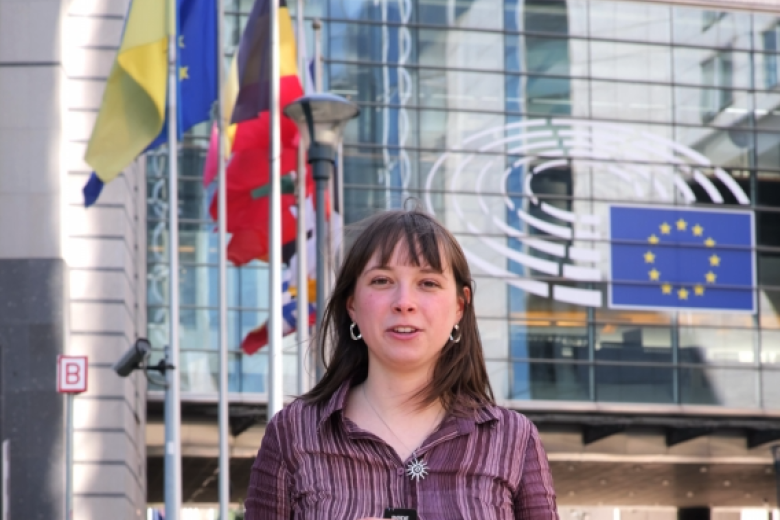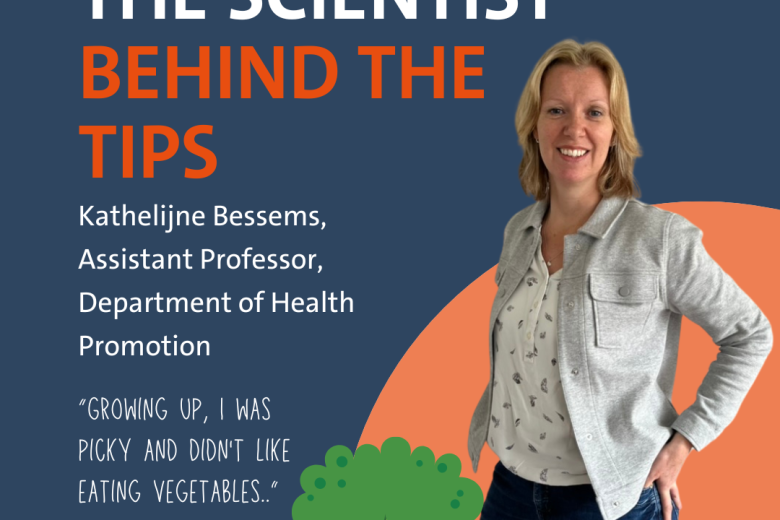UM students dive into COVID-19 at the nano level
What does the coronavirus look like exactly? How does it multiply after entering a human cell? Over the last six weeks, Indian student Kabir Arora has been attempting to map this out together with eighty fellow students. Remdesivir, one of the medicines used to treat President Trump, was also studied at an atomic level. The end result—colourful computer animations that for lay people are indistinguishable from high-level science, were recently presented to each other and to their teachers. Raimond Ravelli, Associate Professor at M4I, is 'super proud' of the end result. "Six weeks ago, these students knew next to nothing about nanobiology. Their dedication, teamwork and achievements are really impressive."
The Nanobiology course is a recent addition to the Maastricht Science Programme, the bachelor's programme in the 'liberal arts & sciences' tradition. This means, among other things, that students (under supervision) put together their own curriculum according to their interests. For Kabir Arora, it was the reason for moving from New Delhi to Maastricht three years ago. "I didn't yet know exactly which scientific direction appealed to me the most, and this is what I’m figuring out.” Now, in his third year, he is interested in a combination of biology, physics and mathematics. Nanobiology was a good fit for this and he was also intrigued by the course description, in which it was already announced that the coronavirus would be the main focus. "You hear so much in the media about this virus that I was curious about information with a more scientific basis.”
Remdesivir unravelled, even before it was given to Trump
In six weeks, Arora and his eighty fellow students learned what Nanobiology is. What are proteins? What does a cell look like at the smallest level of detail? What role do proteins play in disease and in medicine? Ravelli: "Normally, our research group focusses on tuberculosis, but because of the current situation the coronavirus seemed to be an interesting case for teaching.” Arriving at the theme of 'medicine', the teachers chose to take a closer look at Remdesivir with the students. A week later, when President Trump tested positive for COVID and the drug appeared prominently in the media, this group of students knew exactly how the drug could block the replication of the virus. (text continues below picture)

Four stages of viral infection translated into animations
The four stages that the virus goes through in our bodies were the organising principle for the final presentations of each group of ten students. Entry into the cell was one, followed by replication or multiplication. A third group studied the formation of new virus particles and the fourth group studied how the virus leaves the cell again. As a practical exercise, they were taught how to use scientific software with which they could develop 2D and 3D animations.
The unfamiliarity of the virus made it complicated
Ravelli is very impressed by the final result. "They seemed genuinely interested in better understanding the details of this virus; it was clear that they put in more time than they were required to. The fact that they managed to do this together with the ten of them in each group impressed all of us. Many of the finer details of this virus are unknown, so it was impossible to give a 100% scientifically accurate account." Kabir Arora also found that more complicated than building the animation itself. "The biggest challenge of this course was to find reliable information that we could also understand. There is so much new information being published right now about corona but not much organisation or interpretation of it has been done yet.”
What can you do with such animations?
And that brings us to perhaps the most important function of these types of animations according to the two: communication to a wider audience. Ravelli: "Also between researchers. Scientists around the world are now working on the virus, but all in their own specific area. An animation like this could clarify how each piece fits into the big picture. People are visually oriented, so that often works better than a lot of text.” Arora: "It’s also very helpful when you try to explain to a layperson what scientists now understand about the virus.”
Next year, the Nanobiology course may again revolve around another disease. "Hopefully by then, the coronavirus won't be the only obvious choice," concludes Ravelli.
Also read
-
Europe Day
To celebrate Europe Day on 9 May, FASoS student Lisa travelled to Brussels to meet with five of our inspiring alumni who are currently shaping European policy and advocacy. In this video, they share why Europe Day matters, how it’s celebrated in Brussels, and what the idea of Europe means to them.

-
The Green Office Catalyses Circularity Projects’ Autonomy
This semester, the Green Office cultivated the untapped potential of the Community Garden and the Clothing Swap Room. We hope that these Circularity Projects will operate under autonomous, functional organisations by this time next year, with continued support from the Green Office and the SUM2030...
-
Evidence-based health tips for students: the science of eating healthy
In the upcoming months, we’ll share tips on Instagram for our students on how to live a healthier life. Not just a random collection, but tips based on actual research happening at our faculty. The brains behind this idea are Lieve Vonken and Gido Metz, PhD candidates at CAPHRI, the Care and Public...
